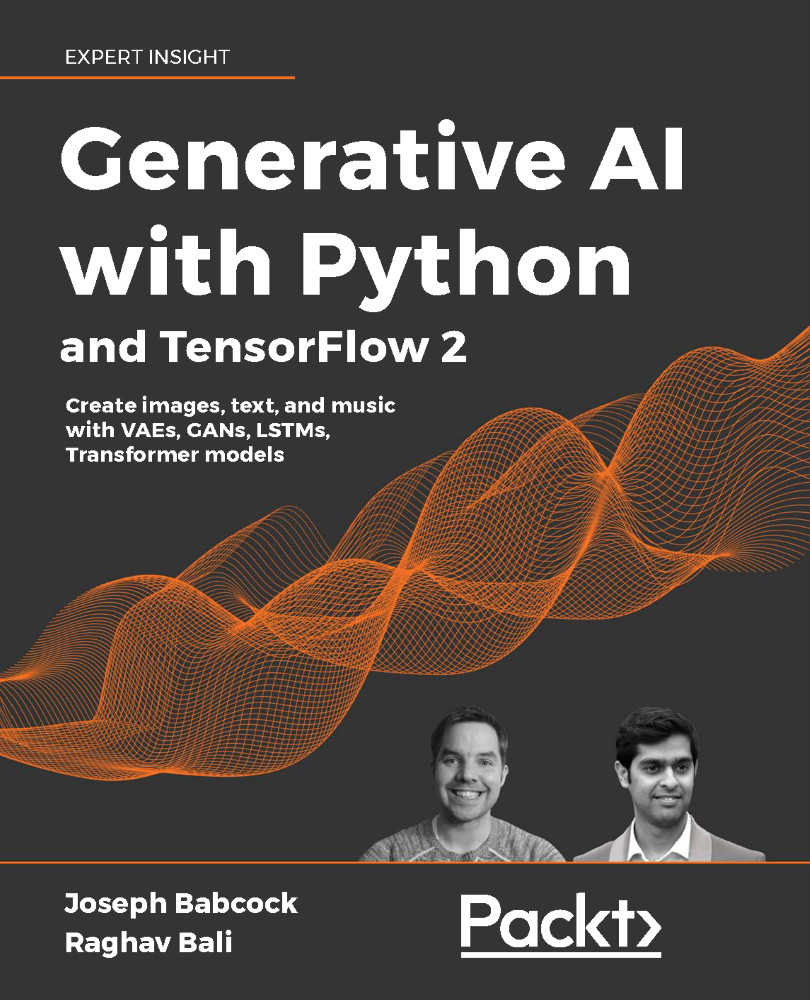Summary
Congratulations on completing yet another complex chapter. In this chapter, we covered quite a bit of ground in terms of building an understanding of music as a source of data, and then various methods of generating music using generative models.
In the first section of this chapter, we briefly discussed the two components of music generation, namely score and performance generation. We also touched upon different use cases associated with music generation. The next section focused on different methods for music representation. At a high level, we discussed continuous and discrete representation techniques. We primarily focused on 1D waveforms and 2D spectrograms as main representations in the audio or continuous domain. For symbolic or discrete representation, we discussed notes/chords-based sheet music. We also performed a quick hands-on exercise using the music21 library to transform a given MIDI file into readable sheet music.
Once we had some basic understanding...












































































